Abstract
It is conventionally considered that because of their fiber orientations, the external intercostal muscles elevate the ribs, whereas the internal interosseous intercostals lower the ribs. The mechanical action of the intercostal muscles, however, has never been studied directly, and the electromyographic observations supporting this conventional thinking must be interpreted with caution. In the present studies, the external and internal interosseous intercostal muscles have been separately stimulated in different interspaces at, above, and below end-expiratory rib cage volume in anesthetized dogs. The axial (cephalo-caudal) displacements of the ribs were measured using linear displacement transducers. The results indicate that when contracting in a single interspace and other muscles are relaxed, both the external and internal intercostals have a net rib elevating action at end-expiratory rib cage volume. This action increases as rib cage volume decreases, but it progressively decreases as rib cage volume increases such that at high rib cage volumes, both the external and internal intercostals lower the ribs. Stimulating the intercostal muscles in three adjacent intercostal spaces simultaneously produced similar directional rib motion results. We conclude that (a) in contrast with the conventional thinking, the external and internal interosseous intercostals acting alone have by and large a similar effect on the ribs into which they insert; (b) this effect is very much dependent on rib cage (lung) volume; and (c) intercostal muscle action is primarily determined by the resistance of the upper ribs to caudad displacement relative to the resistance of the lower ribs to cephalad displacement. The lateral intercostals, however, might be more involved in postural movements than in respiration. Their primary involvement in rotations of the trunk might account for the presence of two differently oriented muscle layers between the ribs.
Full text
PDF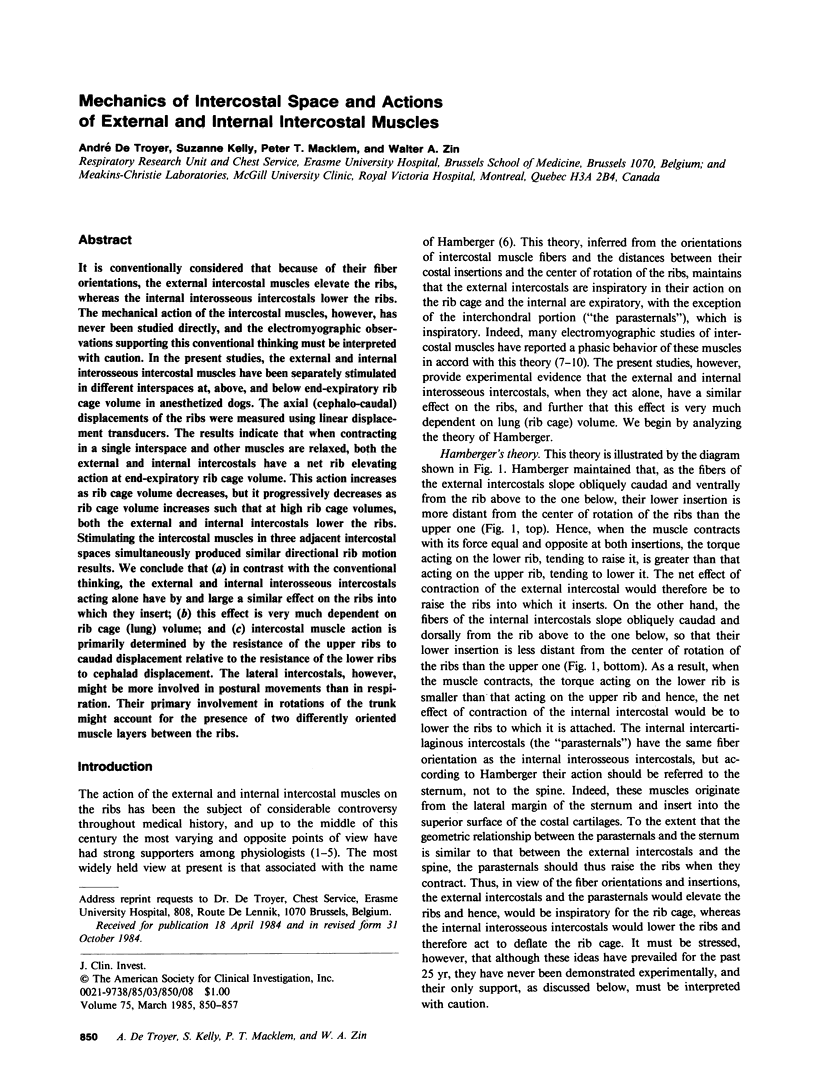
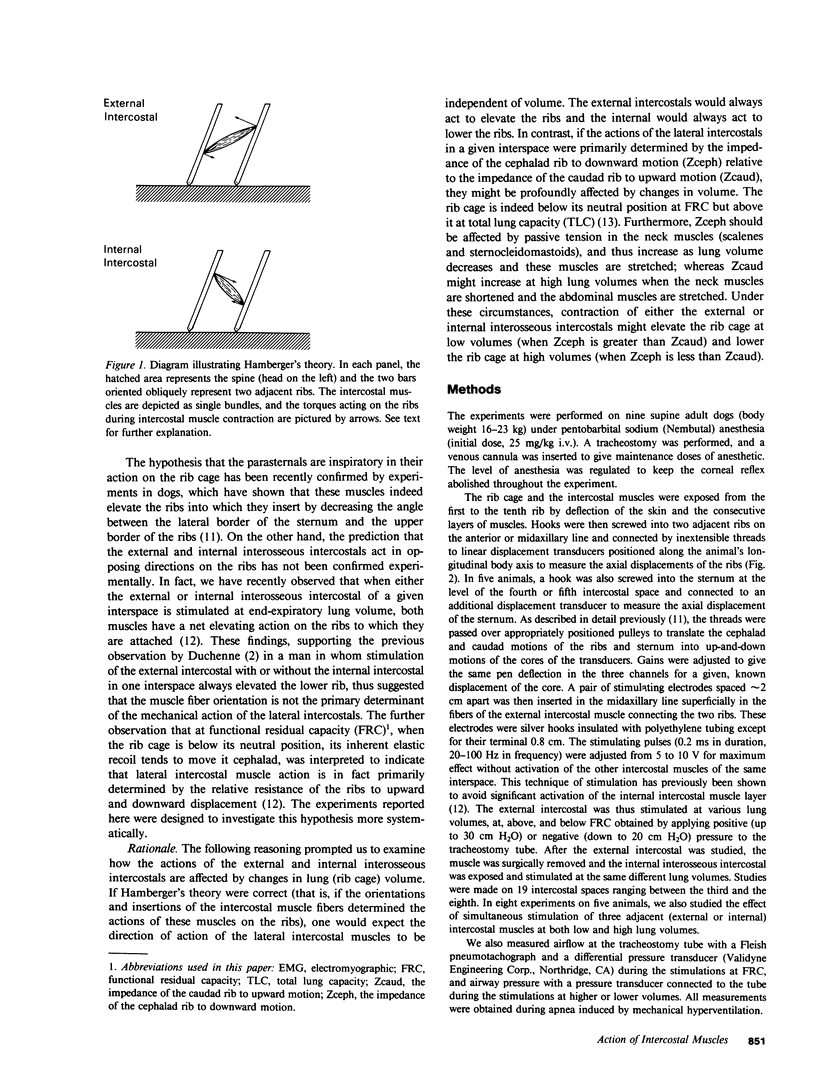
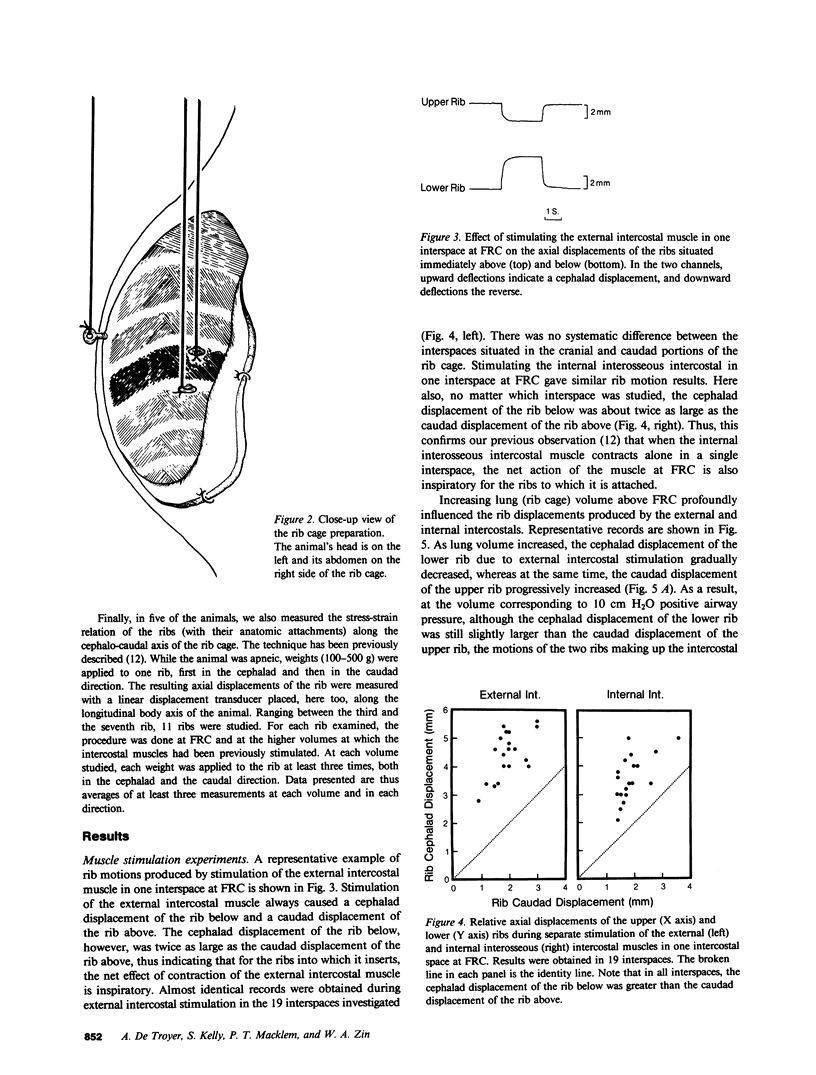
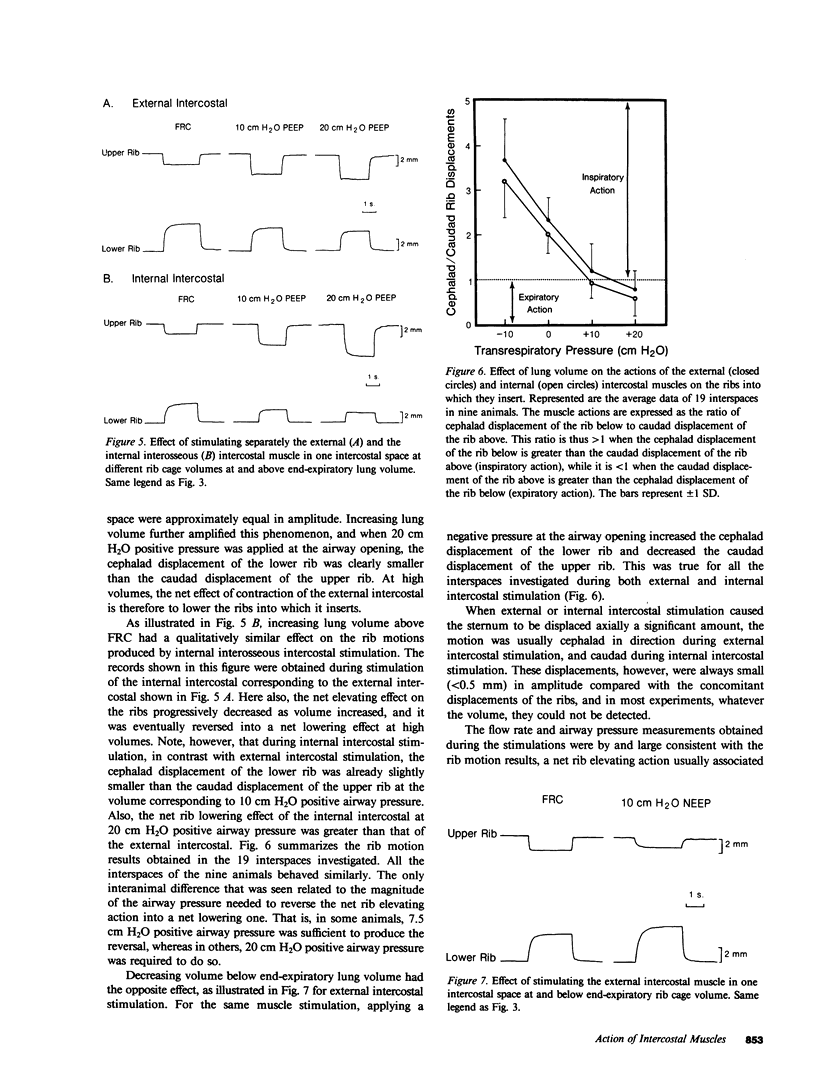
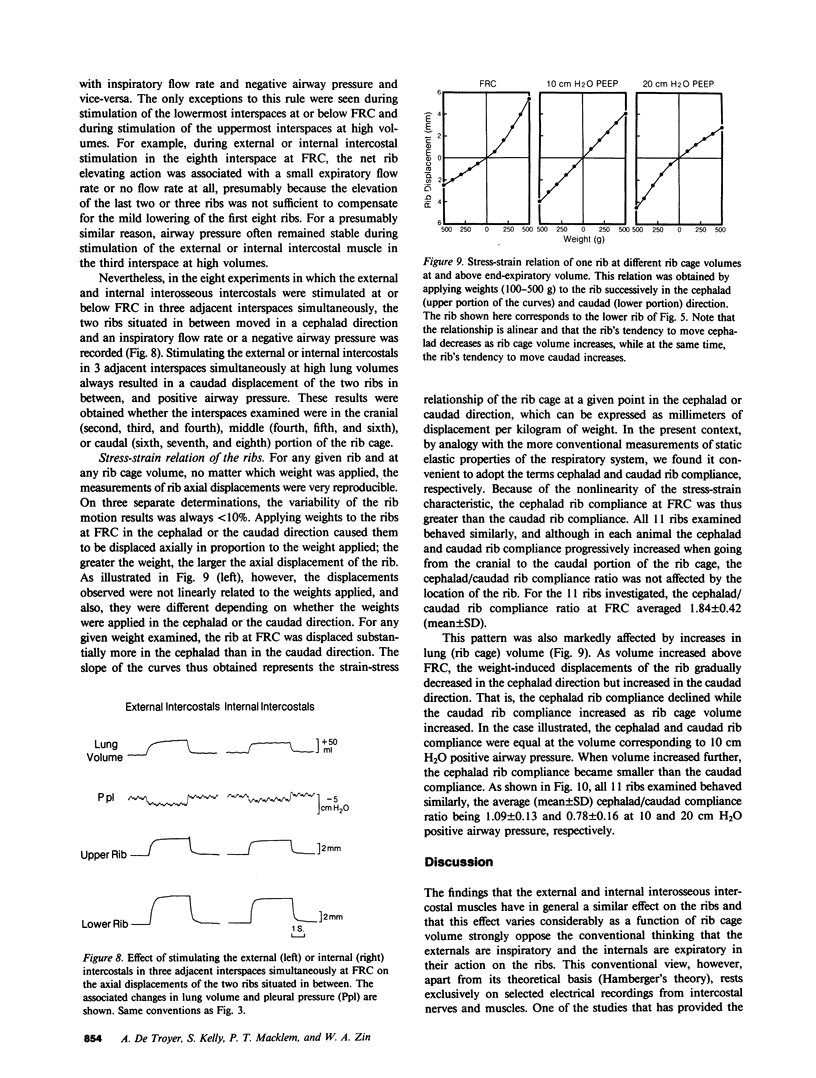
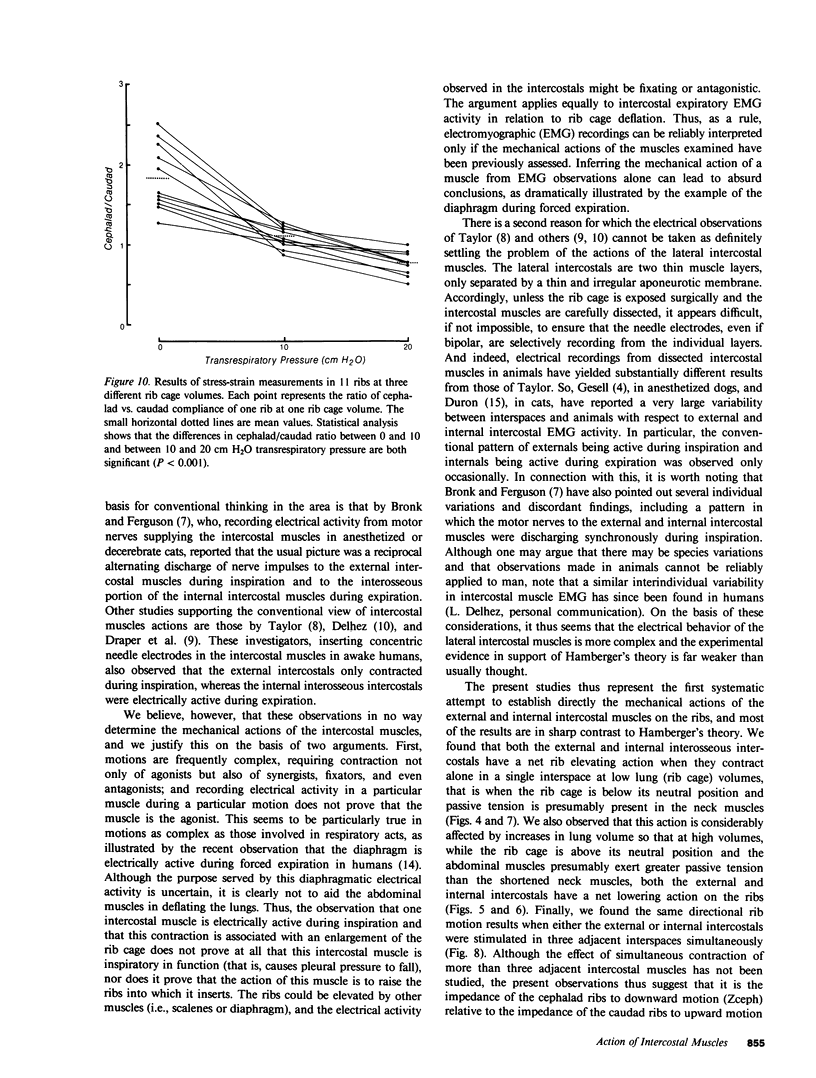
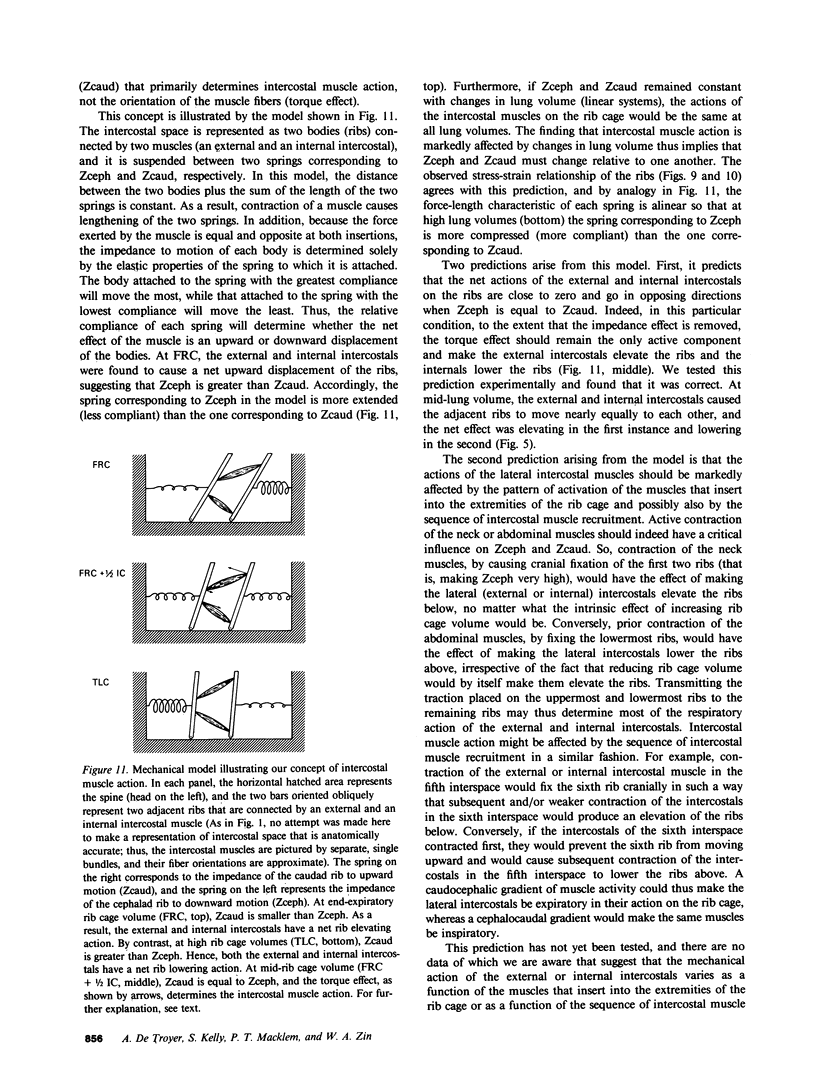
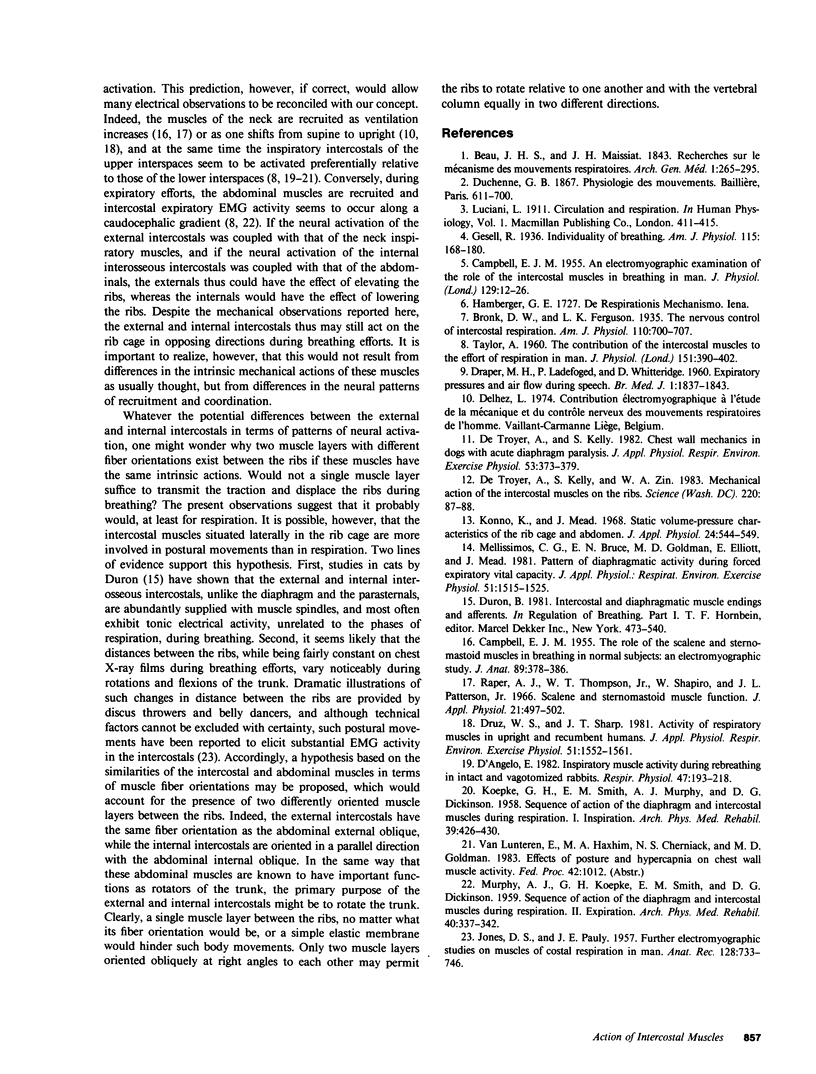
Selected References
These references are in PubMed. This may not be the complete list of references from this article.
- CAMPBELL E. J. An electromyographic examination of the role of the intercostal muscles in breathing in man. J Physiol. 1955 Jul 28;129(1):12–26. doi: 10.1113/jphysiol.1955.sp005335. [DOI] [PMC free article] [PubMed] [Google Scholar]
- CAMPBELL E. J. The role of the scalene and sternomastoid muscles in breathing in normal subjects; an electromyographic study. J Anat. 1955 Jul;89(3):378–386. [PMC free article] [PubMed] [Google Scholar]
- D'Angelo E. Inspiratory muscle activity during rebreathing in intact and vagotomized rabbits. Respir Physiol. 1982 Feb;47(2):193–218. doi: 10.1016/0034-5687(82)90111-6. [DOI] [PubMed] [Google Scholar]
- DRAPER M. H., LADEFOGED P., WHITTERIDGE D. Expiratory pressures and air flow during speech. Br Med J. 1960 Jun 18;1(5189):1837–1843. doi: 10.1136/bmj.1.5189.1837. [DOI] [PMC free article] [PubMed] [Google Scholar]
- De Troyer A., Kelly S. Chest wall mechanics in dogs with acute diaphragm paralysis. J Appl Physiol Respir Environ Exerc Physiol. 1982 Aug;53(2):373–379. doi: 10.1152/jappl.1982.53.2.373. [DOI] [PubMed] [Google Scholar]
- De Troyer A., Kelly S., Zin W. A. Mechanical action of the intercostal muscles on the ribs. Science. 1983 Apr 1;220(4592):87–88. doi: 10.1126/science.6828883. [DOI] [PubMed] [Google Scholar]
- Druz W. S., Sharp J. T. Activity of respiratory muscles in upright and recumbent humans. J Appl Physiol Respir Environ Exerc Physiol. 1981 Dec;51(6):1552–1561. doi: 10.1152/jappl.1981.51.6.1552. [DOI] [PubMed] [Google Scholar]
- JONES D. S., PAULY J. E. Further electromyographic studies on muscles of costal respiration in man. Anat Rec. 1957 Aug;128(4):733–746. doi: 10.1002/ar.1091280407. [DOI] [PubMed] [Google Scholar]
- KOEPKE G. H., SMITH E. M., MURPHY A. J., DICKINSON D. G. Sequence of action of the diaphragm and intercostal muscles during respiration. I. Inspiration. Arch Phys Med Rehabil. 1958 Jul;39(7):426–430. [PubMed] [Google Scholar]
- Konno K., Mead J. Static volume-pressure characteristics of the rib cage and abdomen. J Appl Physiol. 1968 Apr;24(4):544–548. doi: 10.1152/jappl.1968.24.4.544. [DOI] [PubMed] [Google Scholar]
- MURPHY A. J., KOEPKE G. H., SMITH E. M., DICKINSON D. G. Sequence of action of the diaphragm and intercostal muscles during respiration. II. Expiration. Arch Phys Med Rehabil. 1959 Aug;40:337–342. [PubMed] [Google Scholar]
- Melissinos C. G., Bruce E. N., Goldman M. D., Elliott E., Mead J. Pattern of diaphragmatic activity during forced expiratory vital capacity. J Appl Physiol Respir Environ Exerc Physiol. 1981 Dec;51(6):1515–1525. doi: 10.1152/jappl.1981.51.6.1515. [DOI] [PubMed] [Google Scholar]
- Raper A. J., Thompson W. T., Jr, Shapiro W., Patterson J. L., Jr Scalene and sternomastoid muscle function. J Appl Physiol. 1966 Mar;21(2):497–502. doi: 10.1152/jappl.1966.21.2.497. [DOI] [PubMed] [Google Scholar]
- TAYLOR A. The contribution of the intercostal muscles to the effort of respiration in man. J Physiol. 1960 May;151:390–402. doi: 10.1113/jphysiol.1960.sp006446. [DOI] [PMC free article] [PubMed] [Google Scholar]


